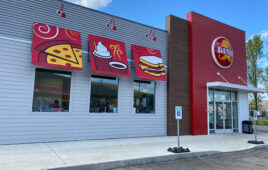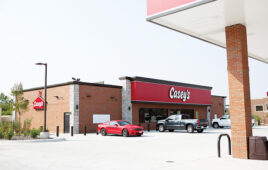Now more than ever convenience store executives recognize that both survival and prosperity depend on their ability to adapt to changing customer preferences and the evolving business environment.
Nowhere is this more apparent than in the changing role of convenience stores as a foodservice provider for budget-conscious, time-sensitive consumers that have scaled back on restaurant dining. In fact, c-stores are seeing a growing percentage of their revenue generated from the sale of fresh food including food prepared on site, packaged sandwiches and hot-cold or frozen dispensed beverages.
In 2009, approximately 9.2% of sales were derived from foodservice, an increase from only 5.9% in 2005. This trend reflects evolving consumer tastes and preferences, as well as a changing competitive landscape exemplified by Starbucks introducing more food options and fast food chains offering salads and other healthy menu options.
In order for c-stores to cash in on this trend, they have increasingly turned to co-branding with quick-service restaurants (QSRs), such as McDonald’s, Taco Bell or Subway. Pilot Travel Centers, one of the largest c-store chains in the country, is a major franchisee of both the Wendy’s and Subway brands.
Building a Brand
C-stores have come to realize that adding another branded concept is a great way to maximize sales per square foot while also bringing in new sales without cannibalizing existing ones.
However, making the shift to providing foodservice affects the c-store business from top to bottom. Before they begin, c-stores need to make a careful assessment of how adding these offerings fits with the demographic profile of their current customer base. Are there customers looking for these kinds of products? Will introducing these options attract a new customer demographic to c-stores? For example, will more women be drawn to c-stores because of healthier fresh-food options?
Chains will also need to evaluate where there is a business case
for introducing fresh foods or premium coffees within all—or just a small subset—of their stores. If it makes sense only in certain stores, the chain needs to determine its willingness to live with that level of variation. Leadership will also need to develop, implement and update store procedures to minimize the risks and manage the cost of establishing and maintaining foodservice.
Assuming a chain decides to move ahead with offering these new products, the hard work of implementing them begins. This will require changes in many areas:
• Alteration of store layout, including the addition of food and beverage preparation areas.
• Establishment of new procurement processes regarding increased numbers of store deliveries.
• Compliance with relevant health and safety rules and regulations.
• Training or hiring of new employees to provide new product offerings.
• Updating of POS system.
• Execution of a marketing and promotional campaign.
C-stores also need to consider the potential downsides and liabilities. For instance, expanding into foodservice can expose an organization to significant new costs and risks. A health and safety issue arising from the sale of food—for example, freshly prepared sandwiches—could cause major commercial and reputational damage going far beyond the individual product range or the individual store where the incident occurred.
Understanding—and effectively managing—these risks is essential not only for management, but also for the boards. For this reason, management may want to emulate one major c-store chain that has a former CEO of a fast food chain on its board and audit committees. By tapping into the expertise of such seasoned professionals, c-store businesses will be better positioned to manage the incorporation of foodservice offerings and any accompanying risks.




